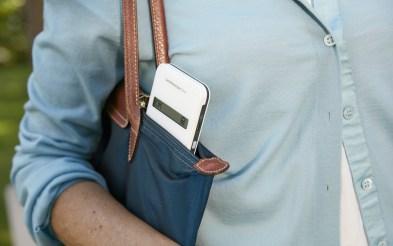The First Few Weeks with an Implant
Most patients recover shortly after the procedure. You may feel slight pain at the implantation site. This generally subsides quickly and soon, you will hardly be able to notice your heart device. In the first few weeks, avoid heavy lifting, stretching your arms and intense physical contact.
Watch Out for Complications
Give Yourself Time
Implantable Defibrillators – Your Life Insurance
Follow-Up Examinations
Follow-Up Care with Home Monitoring

Watch Out for Complications
Always consult your physician if you notice signs such as swelling, reddening or discharge from the implantation site, or if you have a fever that lasts longer than two or three days. Also ask your doctor if you feel dizzy or have chest pain for prolonged periods of time, or if you notice that you are always tired.

Give Yourself Time
Many patients make adjustments to their lifestyle after receiving an implanted heart device. It will take time to get used to it. Most people take about four months to learn how to lead an active life with a heart device. It can be a challenge to accept the "foreign” device as part of your own body. In the beginning, you may experience a loss of self-confidence, be very sensitive or feel blue. These feelings will subside over time as you emotionally accept the pacemaker or implanted defibrillator. If you continue to feel irritable, worried or depressed, ask your physician about getting professional assistance.

Implantable Defibrillators – Your Life Insurance
Implantable defibrillators are literally life insurance. After all, nothing and no one can give you a better chance of surviving a life-threatening episode unscathed, as the device is always with you and delivers your heart the right therapy within a matter of seconds. If you ever start to worry about the state of your health, consider this: you can now enjoy activities that you could not have risked doing without the device.

Follow-Up Examinations
To avoid possible risks, you will now see your physician for regular check-ups. Before you are discharged from hospital, your physician will schedule follow-up appointments to regularly check your health and the implant. The first follow-up appointment is generally four to six weeks after the implantation. During this visit, your physician will ensure that the implantation wound has healed and check your implant’s therapy settings. No incision or surgery is necessary, as an external device is used to program the implant. Your doctor can see all of the device’s settings on a screen, and will know, for instance, how long its battery will last.

Follow-Up Care with Home Monitoring
As your cardiologist has no insight into the rhythm and therapy delivered by the heart device, there is a risk that changes in your health or suboptimal therapy settings are not identified soon enough before your next follow-up appointment. To allow your physician to monitor these events at all times, BIOTRONIK offers HOME MONITORING. With automatic and daily transmissions of your heart’s data, your physician can comprehensively analyze your health and your therapy’s suitability, and schedule additional follow-up appointments as necessary.

